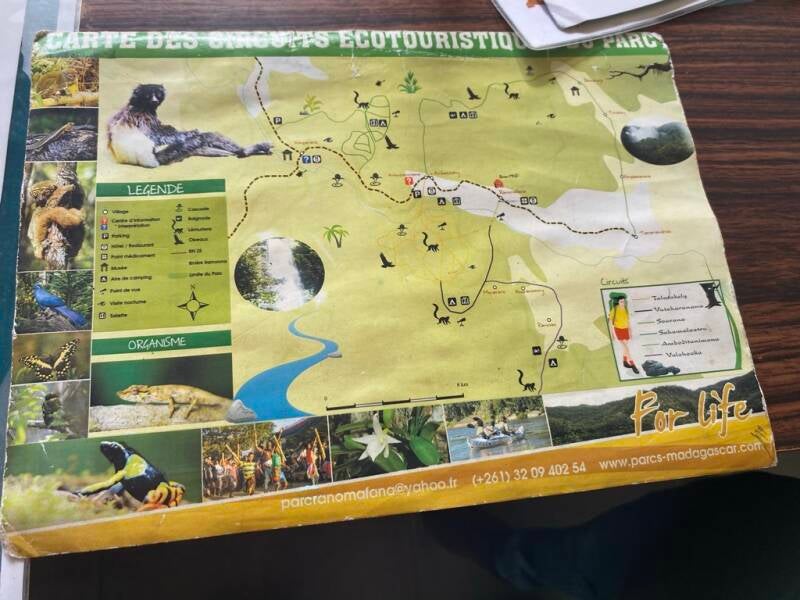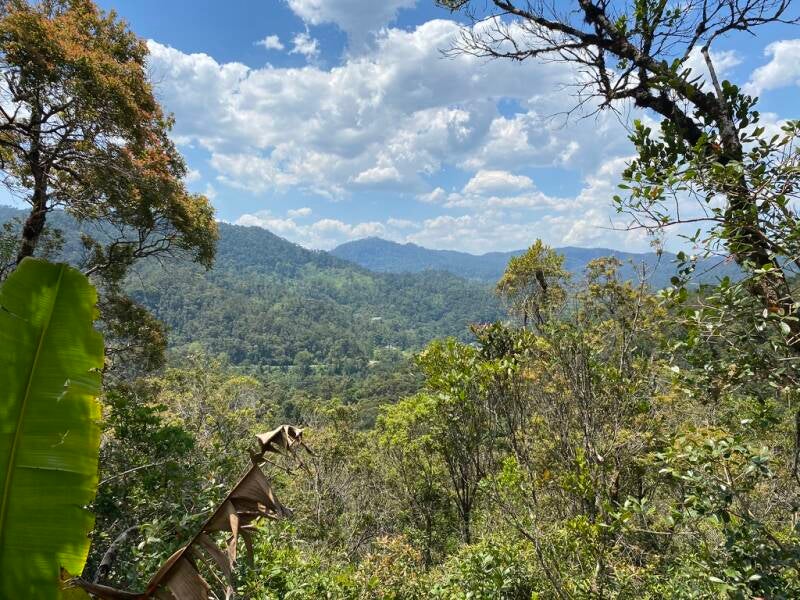Guide to Ranomafana
Ranomafana is one of the best places in Madagascar to see impressive rainforests. There is also a lot of wildlife present, and there are good options to find it. Endemic to the national park is the golden bamboo lemur, but others are present as well. It is an easily accessible park, and because of that, it can be a bit more crowded than other parts of the country. Keep reading if you want to know about this fantastic park.
Price: Entrance fee is 55,000 ariary per person, and a compulsory guide has a maximum rate of 150,000 ariary.
Tourist occurrence: High
How to get here: A 6-hour drive from Antsirabe or 1.5 hours drive from Fiarantsoa.
How much time needed: 1 Full Day
Hiking trails

Ranomafana has some fantastic hiking trails in several different areas. One area has more multiday hikes, and for one day, you would not go here. The most popular area is the most southern area (light trails and Volohoaka), where you can hike and try to find as many lemurs as possible, and this is probably the best area to find wildlife. The other part is the northern Sahamalaotra (which I did not do). Hiking can be a bit difficult, but most people can do these hikes. This is the best thing to do in the Ranomafana region.
Pricing

The regular entrance fee for tourists is 55,000 ariary per adult. Besides the entrance fee, you have to pay for the compulsory guide fees, which are stated above. The prices are different per hike, and you have to talk to a guide about your preference.
Night hikes

Guides will probably offer you a chance to do a night hike. This can be done on the day of the big hike or the day of arrival because the night hike is outside the park, so you don't have to pay an entrance fee. The hikes are next to a road, and the chance is big that you will find chameleons. We found 4 different species during the 1.5-hour hike. The hike is very easy, and you will be walking very slowly. We also saw a couple of Rufous' mouse lemurs and a greater dwarf lemur. Unfortunately, the mouse lemurs were getting fed, so I did not enjoy seeing them. It is a nice thing to find some great reptiles.
Golden brown lemurs

There are many species of lemurs, but the one that is most sought-after is the golden brown lemur, which is endemic to this region. They are pretty easy to find in Ranomafana, and we saw them twice during our hike in Valohoaka. To protect this gorgeous species is the reason that Ranomafana became a national park. Find this beautiful lemur in the forest, and feel the uniqueness of finding him.
Other lemurs and other wildlife

Besides the fantastic golden brown lemur, Ranomafana has many other lemur species that you can find. There are good chances to find red-fronted brown lemurs, red-bellied lemurs (see picture), greater bamboo lemurs, and, with some luck, Milne Edward's sifakas, black and white ruffed lemurs, and eastern woolly lemurs (resting in a tree). During the night, you can also see mouse and dwarf lemurs, although this is not guaranteed. There are chances of finding great birds, chameleons, snakes, and some of the coolest insects in the world, one of which is the giraffe-necked weevil. You probably won't see all these species, but a couple of them are almost guaranteed.
How much time needed
Ranomafana is a location where 2 nights is the perfect amount of time. When you arrive here, you can do a night hike, and the day after, you can walk in the regular national park. After the second night, you can go further or go for another hike in the area.
In combination with
Ranomafana is perfect in combination with some cultural sights in central Madagascar, like the old city of Fiarantsoa or the tea plantation at Sahambavy, which are both close by.
Rainforest

Ranomafana has a very unique ecosystem, which is an impressive rainforest. There are secondary and primary rainforests. There are some great waterfalls and rivers to visit as well, where you can find some kingfishers as well. Enjoy the unique flora during the interesting hikes.
When to visit
Ranomafana is a destination that you can visit throughout the year. From January until March, the weather can be wet, so the paths are a bit slippery, which makes a visit a bit more difficult. In June and August, the temperature can decline, but this can be favorable as you are hiking but can be a bit too cold as well. Ranomafana has a colder climate than most other parts of the country.
Where to sleep
There are many accommodation options in the village of Ranomafana, which is the best village to stay in when visiting the national park. The village may be a bit boring, but it has a nice market, which can be very busy on Sundays.
Final thoughts
Ranomafana is a very accessible national park that offers one of the best wildlife viewings in the entire country. Many people do not miss this park, as it is very good and has a great ecosystem. Hiking is great, as there are different trails. The downfall is that many tourists occur. It can happen that you are looking to lemurs with some more groups. It is not too bad, though, and it should not let you skip this amazing park.
If you want to know more about Madagascar, check out:
Things to do

Madagascar is a big country and has many great things to do. Most of the sights are national parks.
National parks

Madagascar has a lot of national parks and I have visited many of them. Here you have an overview of these.
Itineraries

Madagascar is a large country and to choose the route may be difficult. Here is a guide to help you make your trip!
Wildlife

In Madagascar are a lot of endemic flora and fauna. Lemurs, tenrecs, and fossa are only the tip of the iceberg.
Add comment
Comments